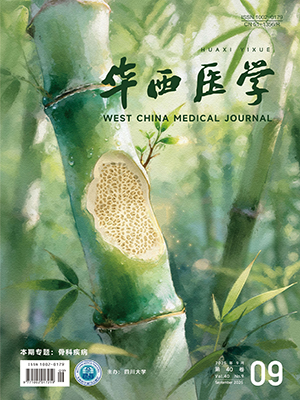| 1. |
Llinás A. Haemophilic arthropathy[J]. Haemophilia, 2010, 16(Suppl 5):121.
|
| 2. |
中华医学会血液学分会血栓与止血学组. 2013血友病诊断与治疗中国专家共识[J]. 中华血液学杂志, 2013, 34(5):461-463.
|
| 3. |
Blanchette VS, Key NS, Ljung LR, et al. Definitions in hemophilia:communication from the SSC of the ISTH[J]. J Thromb Haemost, 2014, 12(11):1935-1939.
|
| 4. |
Pai S, Kapur RL. Impact of treatment intervention on the relationship between dimensions of clinical psychopathology, social dysfunction and burden on the family of psychiatric patients[J].Psychol Med, 1982, 12(3):651-658.
|
| 5. |
李洁, 向孟泽, 高德九, 等. 精神病患者家庭负担会谈量表的信度和效度测试报告[J]. 华西医学, 1997, 12(1):16-18.
|
| 6. |
张作记. 行为医学量表手册[M]. 北京:中华医学电子音像出版社, 2005:54-56.
|
| 7. |
Poon MC, Luke KH. Haemophilia care in China:achievements of a decade of World Federation of Hemophilia treatment centre twinning activities[J]. Haemophilia, 2008, 14(5):879-888.
|
| 8. |
Soucie JM, Symons J, Evatt B, et al. Home-based factor infusion therapy and hospitalization for bleeding complications among males with haemophilia[J]. Haemophilia, 2001, 7(2):198-206.
|
| 9. |
Soucie JM, Cianfrini C, Janco RL, et al. Joint range-of-motion limitations among young males with hemophilia:prevalence and risk factors[J]. Blood, 2004, 103(7):2467-2473.
|
| 10. |
Steen Carlsson K, Höjgård S, Glomstein A, et al. On-demand vs. prophylactic treatment for severe haemophilia in Norway and Sweden:differences in treatment characteristics and outcome[J].Haemophilia, 2003, 9(5):555-566.
|
| 11. |
Rodriguez-Merchan EC,Heim M. Hemophilia orthopedic management with emphasis on developing countries[J]. Semin Thromb Hemost,2005, 31(5):518-526.
|
| 12. |
Antunes SV, Vicari P, Cavalheiro S, et al. Intracranial haemorrhage among a population of haemophilic patients in Brazil[J]. Haemophilia, 2003, 9(5):573-577.
|
| 13. |
Stieltjes N, Calvez T, Demiguel V, et al. Intracranial haemorrhages in French haemophilia patients (1991-2001):clinical presentation, management and prognosis factors for death[J]. Haemophilia, 2005, 11(5):452-458.
|
| 14. |
Patiroglu T, Ozdemir MA, Unal E, et al. Intracranial hemorrhage in children with congenital factor deficiencies[J]. Childs Nerv Syst, 2011, 27(11):1963-1966.
|
| 15. |
Biss TT, Chan AK, Blanchette VS, et al. The use of prophylaxis in 2663 children and adults with haemophilia:results of the 2006 Canadian National haemophilia prophylaxis survey[J]. Haemophilia, 2008, 14(5):923-930.
|
| 16. |
Khair K, Lawrence K, Butler R, et al. Assessment of treatment practice patterns for severe hemophilia A:a global nurse perspective[J]. Acta Haematol, 2008, 119(2):115-123.
|




